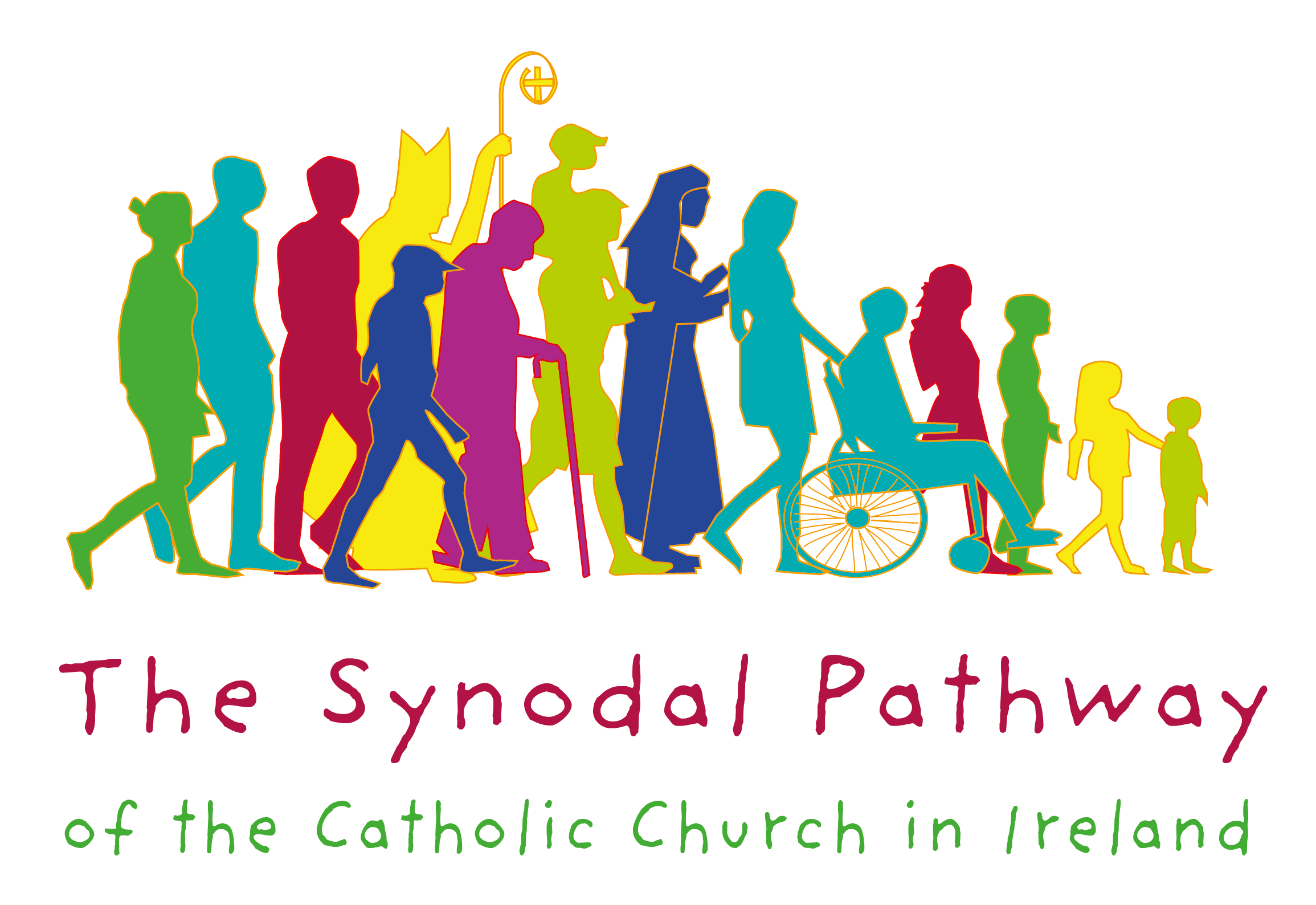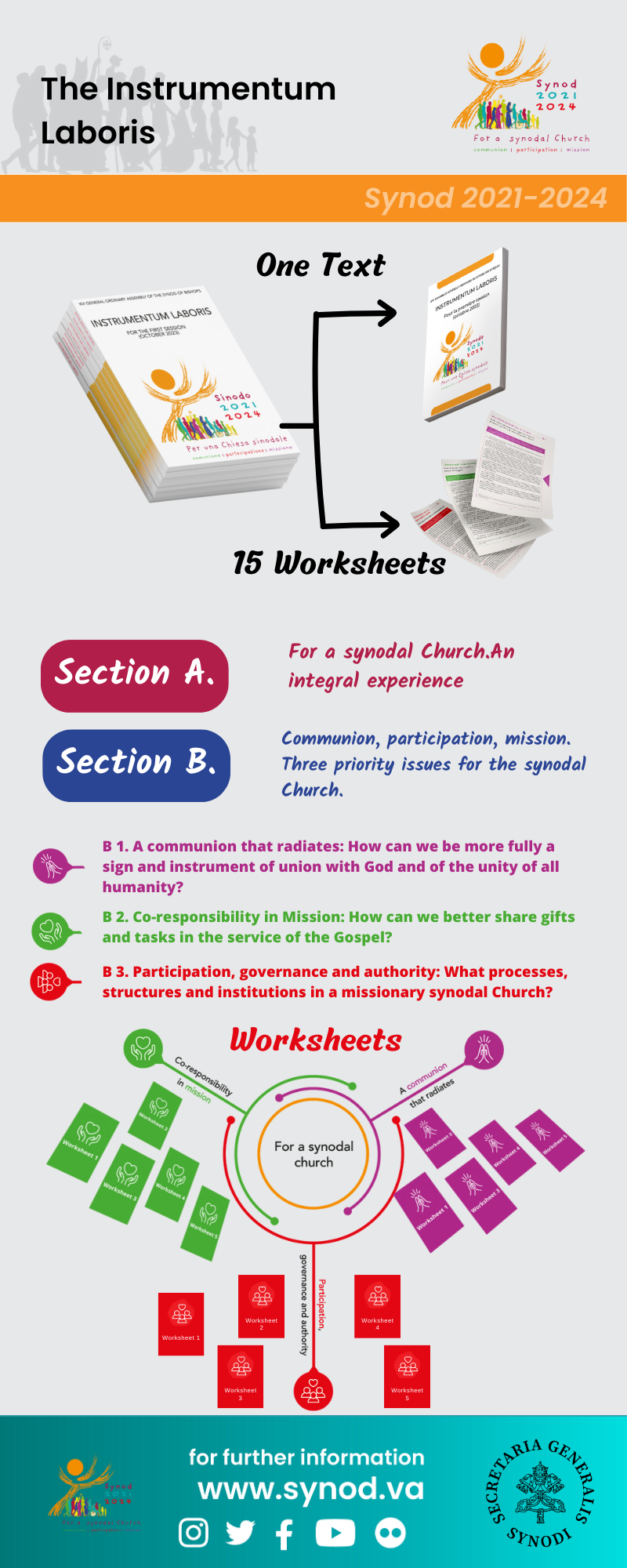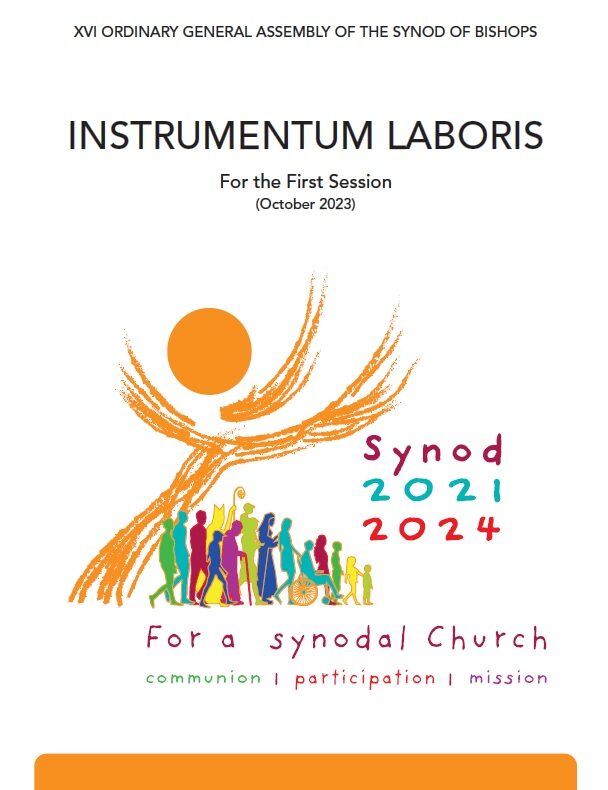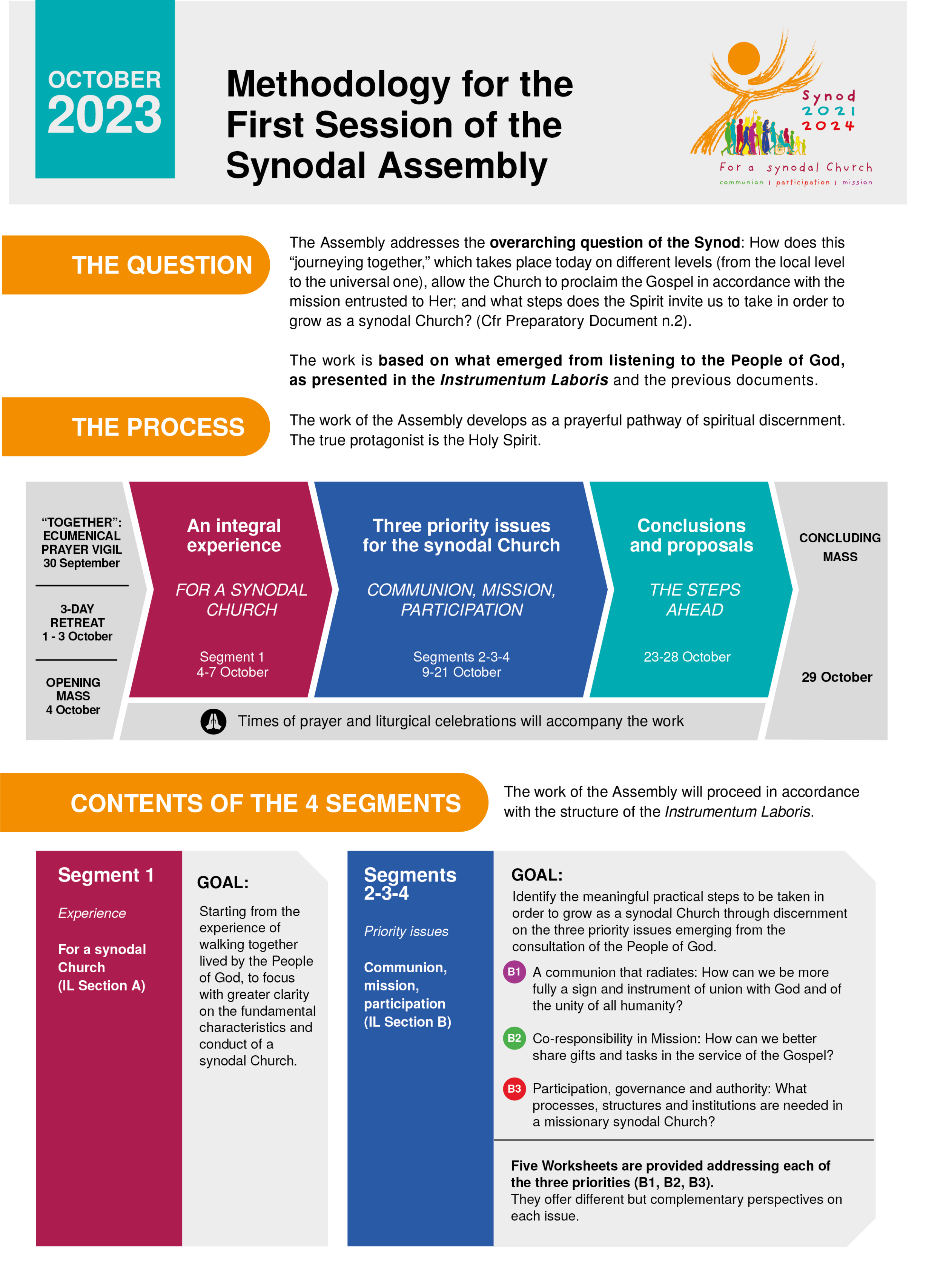On Sunday, 25th June, Mr Thierry Bonaventura, the Communications Manger for the Universal Synod issued the following newsletter and further information in relation to the Instrumentum Laboris and the methodology that will be used for the Synod in October this year. You can read the full newsletter below. All the infograhics referenced in the newsletter can be found below too!
Dear friends,
Last Tuesday, 20 June, the General Secretariat of the Synod was finally able to present the Instrumentum laboris (IL), the working document that will animate the work of the XVI Ordinary General Assembly of the Synod of Bishops (4-29 October 2023).
The works on the preparation of this text “of the whole Church” – as defined by Cardinal Mario Grech during the presentation press conference – began in April, in the aftermath of the continental synodal assemblies and the reception of the respective seven final assembly documents, not forgetting the one from the digital synod.
The text is not the fruit of ChatGPT but of a long process of discernment that has taken into account all that has been done and elaborated in these two years of process without wanting to be a synthesis or a conclusive document. On the contrary, it is rather to be understood as a text that opens and invites further discernment, more focused this time, to arrive at concrete steps in making our Church increasingly synodal. The long genesis of the text is essentially due to a genuine concern to make the IL as ecclesial as possible. The General Secretariat of the Synod is the General Secretariat of the whole Church and not just a part of it. We have tried – perhaps unsuccessfully – to listen to all the voices and also the silences. We have done this by submitting the text, at various times during its elaboration, to the critical reading of various experts and Church leaders – the heads of the Vatican dicasteries in primis – so that the reflections and questions posed not only corresponded to the reflections and questions that emerged during the entire synodal process, but were also those perceived by those who have the pastoral and institutional burden of guiding the Church.
It seems appropriate to point out this real concern on the part of the General Secretariat that often does not appear in the headlines of newspaper articles or in the reflections of blogs that were published in the aftermath of publication. In fact, fellow journalists and columnists have often stopped at a perhaps somewhat “superficial” reading of the document, limiting themselves to noting (and reducing the text itself) to a few themes that constitute tensions in the Church and not the central point of this synod, which is that of the increasingly effective conversion of the Church to its synodal nature. The open structure of the document with its many questions has perhaps then brought out a sense of ‘disorientation’. This is understandable. The image that comes to mind is that of the people of Israel walking in the desert. They know that they are called to reach the promised land, but they do not see the goal clearly, they are impatient, and because of this, they become discouraged, backslide, and even turn their backs on God. In reading the IL, we too can fall into the temptation of doubt, impatience, and perhaps even despair with respect to the path we have taken. It is at this point that we will have to ask ourselves whether we really believe that synodality is what the Spirit wants for his Church and that it is the Spirit who is driving this process forward. In fact, this synodal journey almost requires an ‘act of faith’ on the part of each of us, first and foremost in the members of the next assembly in October, in their ability to be docile to the voice of the Spirit for the good of our Church.
In this newsletter you will find all the references to find the Instrumentum Laboris, together with infographics that will enable you – at least we hope so – to better understand how the text is structured, the methodology of the Assembly and the Conversation in the Spirit that many of you have already experienced. You will also find translations into some languages of the speeches during the Press Conference presenting the Instrumentum laboris.
In addition, on synodresources.org you will also find some elements and worksheets on how local groups can use the Instrumentum laboris to continue their reflection. The IL can provide a further opportunity for dialogue at the local level with those who have felt ‘excluded’ from this process.
I wish everyone a good reading,
Thierry Bonaventura
Communication manager
|
|





